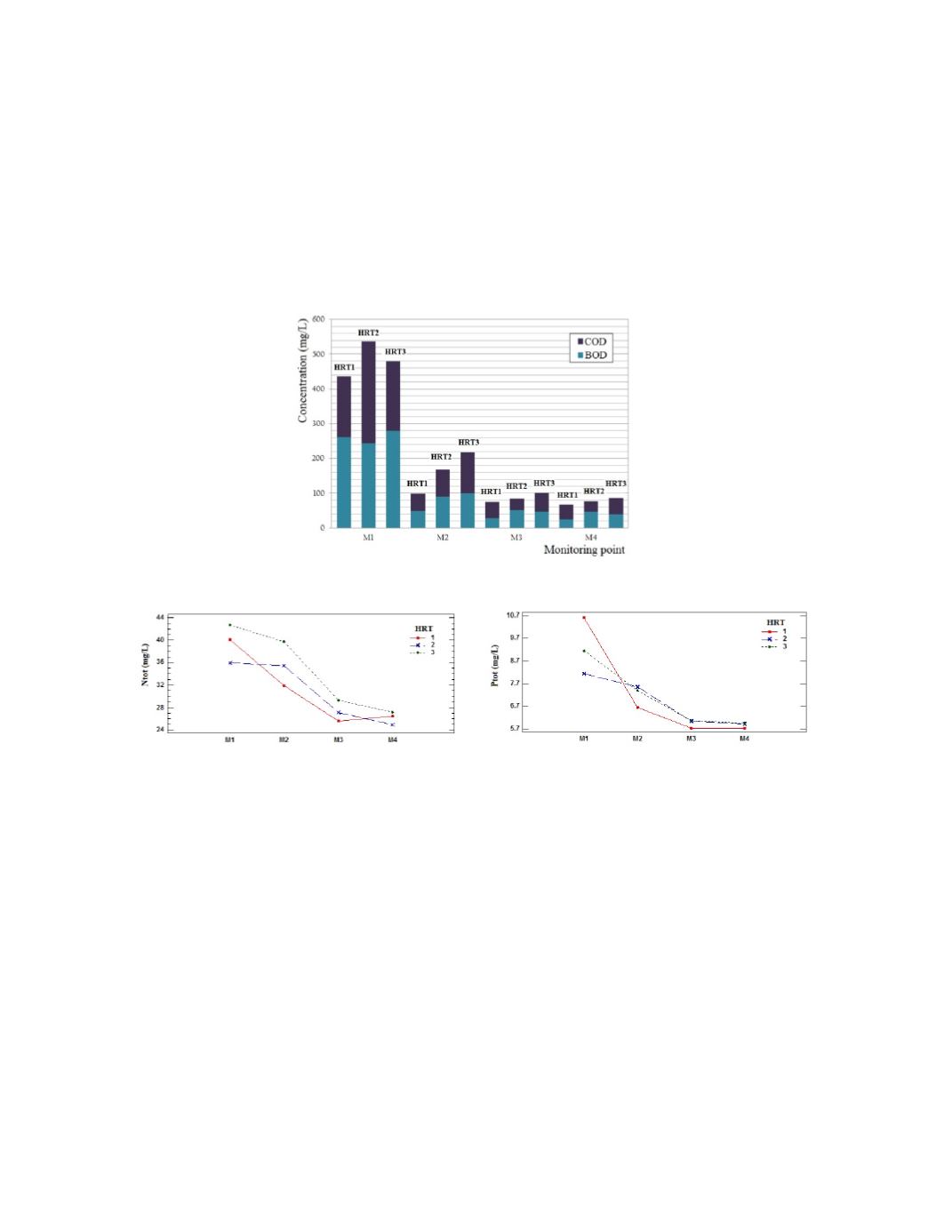
106
M2, the anaerobic conditions of UAF caused an increment of NH
3
-N (p≤0.05), while the
N
Org
decreased (p≤0.05). Nevertheless, among all the nitrogen forms, the N
Org
is present in
larger quantities, which means a decrease along the treatment as Nt
ot
(figure 2).
The biggest decrease of P
tot
is from M1 to M2 (p≤0.05) because it is mainly adsorbed in the
biofilm formed on tezontle (figure 3). The biofilm formed by natural process is removed
and disposed on the UAF bottom. Regarding the HSSCW process, from M2 to M4
(p≤0.05), the decrease is associated with the plant nutrient uptake.
Figure 1. Organic matter performance
Figure 2. Interaction plot N
tot
(mg/L)
Figure 3. Interaction plot P
tot
(mg/L)
In general, the UAF was in charge of the organic matter decrease, while the nutrient
removal was carried out by HSSCW reaching one of the implementation pre-treatment
purposes, since the organic matter removal helped to decrease the area requirements and
avoid the early clogging in the constructed wetland. The best UAF efficiencies were
recorded in the first HRT. The HSSCW got the best performance for organic matter and
nitrogen during the third HRT, and the second HRT for phosphorus removal.
References
Barros P., Ruiz I., Soto M. (2008), Performance of an anaerobic digester-constructed
wetland system for a small community, Ecological Engineering,
33
, 142-149.
Knight R., Wallace S. (2009) Treatment Wetlands, second edition, Taylor and Francis
group, Boca Raton, FL.


